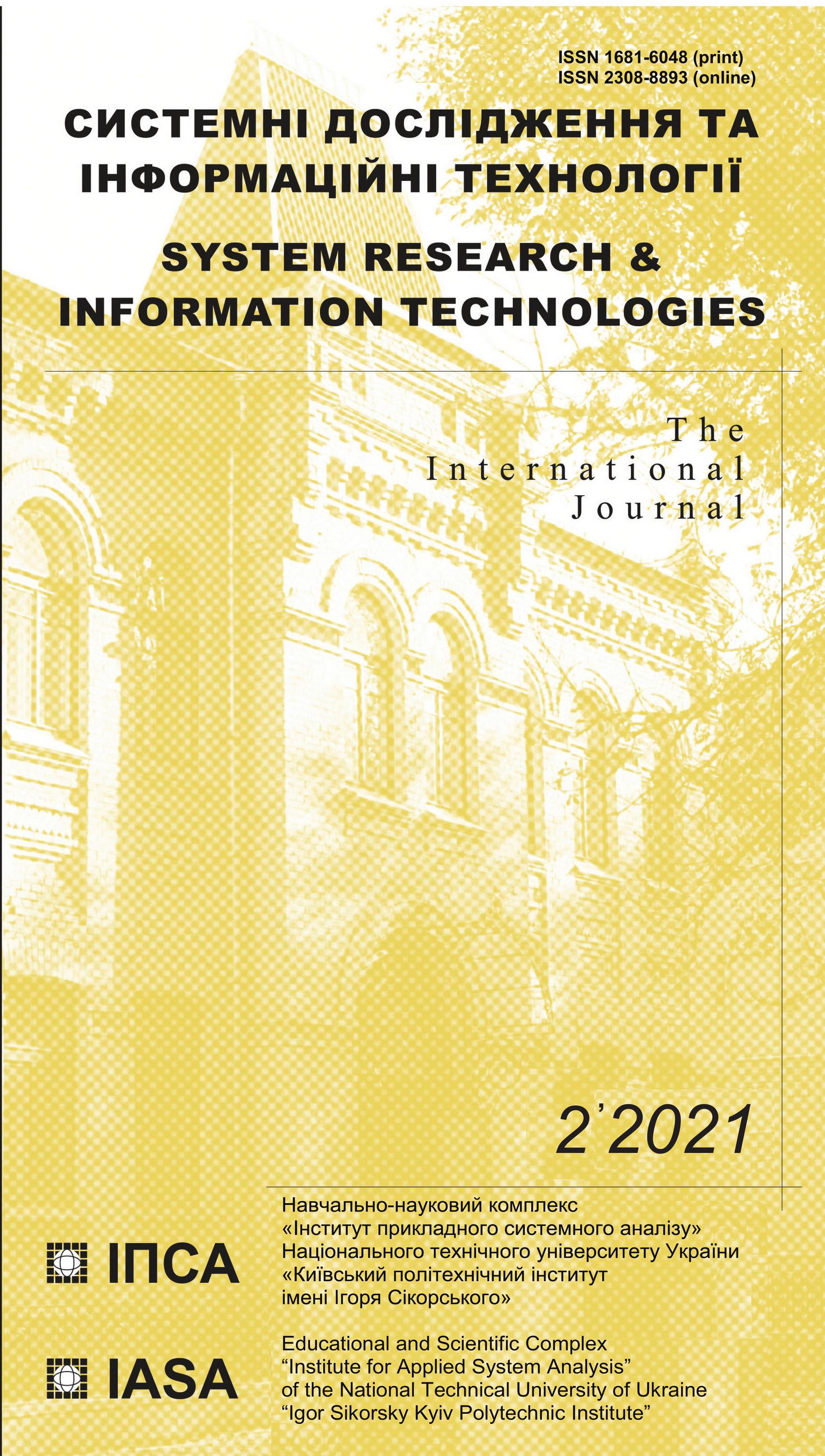Developing an algorithm for rapid assessment of living standards and quality of life of the population in the region
DOI:
https://doi.org/10.20535/SRIT.2308-8893.2021.2.04Keywords:
living standards, variable reduction, clustering, discriminant analysis, rankingAbstract
The article presents the rapid assessment methodology that allows analysts to carry out qualitative monitoring of the living standards of the population using a wide range of methods for statistics processing (factor analysis, cluster analysis, discriminant analysis, method of combining indicators of different dimensions). This methodology is characterized by the high speed of mathematical calculations, availability to users with different skill levels and universal applicability to various study objects. The rapid assessment method is intended for screening the living standards of the population and activity quality of the territorial authorities, taking into account a different set of indicators. This article offers the author’s indicator system for assessing the living standards and quality of life of the population. The methodology algorithm describes flowcharts of the index method for combining statistical observations of different dimensions, which make it possible to automate the process of territory ranking. The study covers 12 urban districts and 43 municipal districts of Rostov Oblast. The methodology described in the article will help eliminate a subjective factor while monitoring, rationally distribute financial resources allocated annually by the authorities to support programs for socio-economic development of the territory, increase the economic efficiency and implementation speed of innovative projects that have a direct impact on the living standards and quality of life of the population.
References
W.R. Klecka, Factor, discriminant and cluster analysis, (in Russian). Moscow: Finance and Statistics, 1989, 215 p.
I.D. Mandel, Cluster analysis, (in Russian). Moscow: Finance and Statistics, 1988, 176 p.
S.A. Ayvazyan, V.M. Buchstaber, I.S. Enyukov, and L.D. Meshalkin, Applied statistics: classification and dimensionality reduction, (in Russian). Moscow: Finance and Statistics, 1989.
T. Hastie, R. Tibshirani, and J. Friedman, The Elements of Statistical Learning, 2nd edition. Springer, 2009, 533 p.
J. Langford, Tutorial on Practical Prediction Theory for Classification, 2005, 28 p.
M. Zhambyu, Hierarchical cluster analysis and correspondence, (in Russian). Moscow: Finance and Statistics, 1988, 345 p.
N.V. Zubarevich, “Russian regions in January-July 2019: Mix of growth, stagnation and slump”, Russian Economic Development, vol. 26, no. 10.
Roberta Comunian and Lauren England, “Creative Clusters and the Evolution of Knowledge and Skills: From Industrial to Creative Glassmaking”, Geoforum, 99, pp. 238–247, 2019.
M.A. Lesnichaya, O.A. Kolchina, and H.A. Kondzharyan, “Elaboration of a conceptual scheme of municipal units classification according to the level of budgetary provision on the base of cluster analysis (2019)”, Proceedings of the 2019 IEEE Conference of Russian Young Researchers in Electrical and Electronic Engineering, ElConRus 2019, article no. 8657216, pp. 1415–1420.
Marcelo Cano-Kollmann, John Cantwell, Thomas J. Hannigan, Ram Mudambi, and Jaeyong Song, “Knowledge Connectivity: An Agenda for Innovation Research in International Business”, Journal of International Business Studies, 47, pp. 255–262, 2016.
Fulvio Castellacci, “Co-Evolutionary Growth: A System Dynamics Model”, Economic Modelling, 70, pp. 272–287, 2018.
M.A. Lyamina, “An approach to design of intelligent system rapid assessment for the mortgage climate of the constituent entities of the Russian Federation” (in Russian), Technical science, no. 10 (87), pp. 23–28, 2008.
Smarteka.com. Available: https://smarteka.com/practices/vyavlenie-maloimusih-grazdan-s-maksimal-nojdekompoziciej-harakteristik-maloimusih.
The Economist Intelligence Unit’s quality-of-life index. Available: https://www.eiu.com/n/ (accessed on 26.06.20).
United Nations Development Programme, Human Development Reports 2019. Available: http://hdr.undp.org/en/content/2019-human-development-index-ranking (accessed on 26.06.20).

